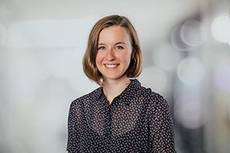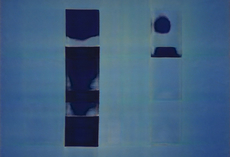Aesthetics - Subject - Education: The computation of arts
How algorithmic structures change the conditions for aesthetics and aesthetic education
In a "culture of digitality" (Stalder 2016), algorithms provide orientation by transforming information and data into formats that can be perceived by humans. They are fundamental to what is visible on the surface, audible, perceptible in the broadest sense, while they remain hidden beneath this surface. Their structural nature, their "digital mediality" (Jörissen 2014) exerts a fundamental influence on ways of perception, thinking and acting. In this respect, algorithms also become relevant from an educational and subjectivation theory perspective (Allert/Asmussen 2017).
Concepts of aesthetic education (Laner 2018) take into account such changes in perception, feeling and thinking that result from an engagement with aesthetic things (e.g. artistic artefacts) and that lead to a changed view of oneself and others, a changed attitude towards the world and oneself. Art can thus be understood as a place and object of aesthetic experience, which in turn can lead to (aesthetic) educational processes. Art operates against the background of socio-cultural and socio-technical developments, it uses the (technical) means of its time available to it and opens up new perspectives on people and the world surrounding them.
The attempt to make art, aesthetics and creativity calculable has a long tradition in art history (e.g. the golden section in Greek antiquity, perspective in the Renaissance). Against this background, expression with and through algorithms represents a logical consequence in artistic practice. The field of art represents a special subject area, which allows the relationship between visible surface and invisible subsurface outlined at the beginning to be experienced.
An examination of algorithmic forms of art (or code art) seems to be fruitful in several respects in view of their transformative potential. Aesthetic practices: On the one hand, this art form is based on programmable code, which contributes to making the code performatively perceptible as an aesthetic thing, as a work of art. Such works of art are of particular interest if they are produced by non-human actors, i.e. if they are calculated by supposedly intelligent computer systems on the basis of data (sets), e.g. with the help of deep learning algorithms or so-called Generative Adversarial Networks (GAN). Aesthetic experiences: On the other hand, such works of art can trigger aesthetic experiences of a special quality, as they can open up opportunities for reflection on the algorithmically structured nature of the digital that go beyond the field of art.
Against this background, the question is to be examined to what extent art can be used to demonstrate the extent to which the algorithmic structures of the digital can shift the basic coordinates for sensory perception (aesthetics) and, following on from this, what consequences this has for aesthetic education. In short, the aim is to use algorithmic forms of articulation (art) to work out (new) qualities/characteristics of an aesthetic education that reacts to the increasing digital mediality/algorithmicity. To this end, educational and subjectivation-theoretical discussions will be brought together with the perspectives of Critical Code Studies in order to structurally conceptualise algorithmic forms of art, in the sense of a structural media education understood as articulation.
Contact
More Information
- Art des Projekts: Dissertation
- Duration: 07/2020 - 06/2023
- Funding: Scholarship of the state of Saxony-Anhalt
Reference
- Allert, H./Asmussen, M. (2017). Bildung als produktive Verwicklung. In: H. Allert, M. Asmussen, C. Richter (Hrsg.), Digitalität und Selbst: Interdisziplinäre Perspektiven auf Subjektivierungs- und Bildungsprozesse. Bielefeld: transcript. S. 27-68.
- Jörissen, B. (2014). Digitale Medialität. In: C. Wulf, J. Zirfas, (Hrsg.), Handbuch Pädago-gische Anthropologie. Wiesbaden: Springer. S. 503-513.
- Laner, Iris (2018): Ästhetische Bildung zur Einführung. Hamburg: Junius.
- Stalder, F. (2016). Kultur der Digitalität. Berlin: Suhrkamp.







